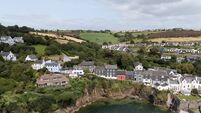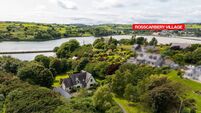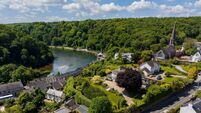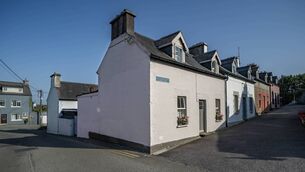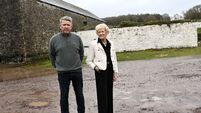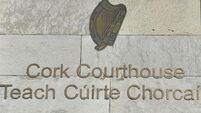Fogarty fortress lost in fog of history and time
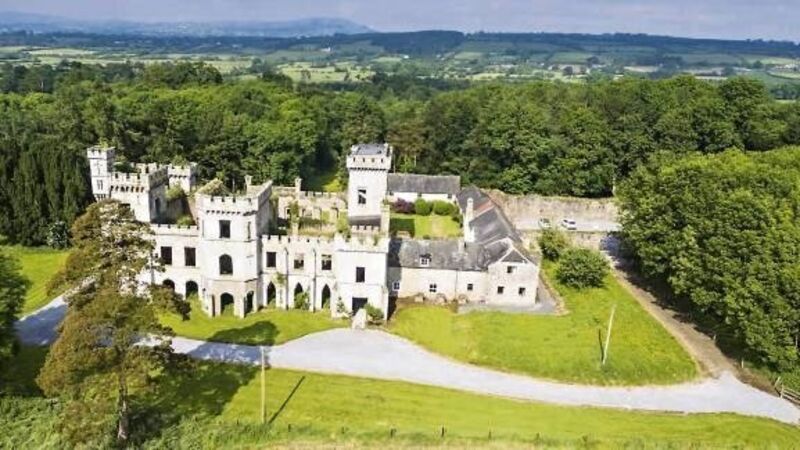
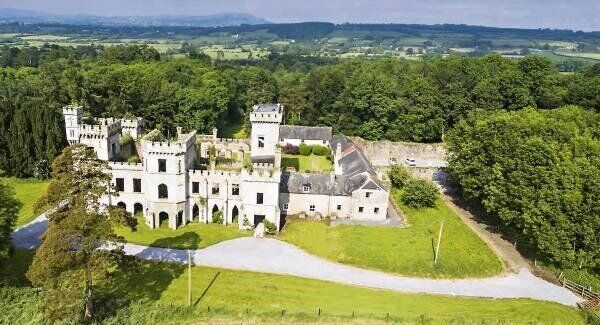
In the last four hundred years or so, Castle Fogarty in Tipperary passed out of family ownership just once — when Cromwell confiscated it in the 1650s and the O’Fogarty’s had to buy it back from one of his troopers.
The seat of the O’Fogarty clan since medieval times, it was originally built as a stone fortress at Ballycahill, between Thurles and Cashel, and rebuilt as a large house in the Georgian era, before being was transformed in the 1840s into a gothic revival castle with five castellated towers and 20 bedrooms.
Although the IRA burned it down during the war of independence, the story doesn’t end there, because it was partially restored in the 1930s by the owners who created a seven-bed property out of adjoining outbuildings and one of the towers.
Since Cromwellian times, the property has passed by inheritance to successive generations. Despite being Catholics, the O’Fogartys maintained ownership until the male line ran out in 1788 when it passed to a daughter, Elizabeth and her husband William Lenigan. Some 90 years after that when the male heirs ran out a second time, it passed yet again to a daughter, Anna Elizabeth Lenigan whose husband John Vivian Ryan took Lenigan as an additional name.
=====================
https://albumizr.com/a/yLfX
The current owner Michael Ryan, who inherited Castle Fogarty from his father in the 1990s, says that over the years the family kept the document which showed the repurchase of the property from one of Cromwell’s troopers.
It has, he reveals, also kept the harp of Cornelius O’Forgarty, who in addition to being a harpist and clan chief was also a Jacobite and Captain in the army of James 11 who fought at the Battle of the Boyne in 1690 and in the siege of Limerick. (The harp is currently on display in Thurles). When the IRA burned down the castle in 1922, following its occupation by a British Regiment, it was owned by Captain Vivian Ryan Lenighan – who bequeathed it to his brother, who subsequently gave to his cousin, the current owner’s grandfather.
“ It took almost 20 years, but the family got compensation of £1000 from the state on condition it was rebuilt,” reveals Michael explaining that at that time the family sold 400 of the 500 acres to the Land Commission.
Living in the Argentines, his grandfather gave the £1000 and the use of the property to his sister (Michael’s great-aunt), who rebuilt a section using outbuildings and a three storey tower.
Since becoming its owner in the 1990s, Michael, now a retired UK academic, has spent summer and Easter holidays at Castle Fogarty carrying out whatever renovations and improvements he could: “There were two phases of renovation —first in the 1990s and again ten years ago.”
Works carried out included putting in 42 teak double glazed windows, replacing the roof on the tower, which was a major undertaking, as well as installing central heating and a new water supply.
He also cleared away vast quantities of ivy from the castle ruins and planted thousands of oak and beech trees.
“It is difficult after all these years to be the one who doesn’t maintain the line but the time has now come for me to hand the task on to someone else,” he says, adding that he would like see the property being maintained and improved – so it could be of benefit to the village and the local community.
Tasked with selling Castle Fogarty which includes 102 acres, 4,300 sq ft of ruins as well as a 5,000 sq ft residence, Savills auctioneers point out that this is the first time in 380 years that the estate has been available for purchase.
On the market with a guide of €1 million, it includes 64 acres of farmland and 36 acres of woodland.
The two-storey residential wing is C shaped around a courtyard and has a multitude of rooms as well as a wine cellar, three bathrooms, two kitchens and several reception rooms.
The most impressive feature is the restored North Eastern Tower which has a games room on the second floor and a bedroom on the third, offering magnificent views of the parkland and across to the Silvermines.
Although windowless and roofless, the Neo-Gothic ruin with its five castellated towers is still an attractive building. Listed for preservation, it is described by the Buildings of Ireland Website as being a well built structure with good detailing seen in the string courses, buttresses and imitation loops. Sadly it concludes that the castle “presents a gaunt ruin in the landscape today.’
’ The current owner is hoping that with Castle Fogarty’s architectural features, its long history and its hundred acres of secluded parkland a new owner can be found to restore it to its former glory and possibly turn it into some kind of a tourist facility Located at Ballycahill, Castle Fogarty is nine kilometres from Thurles and 21 from Cashel.
VERDICT:
Worth saving.
Thurles Co Tipperary
€1 million
Size: 500 sq m (5,328 sq ft)
Bedrooms: 7
Bathrooms: 3
BER: Exempt






